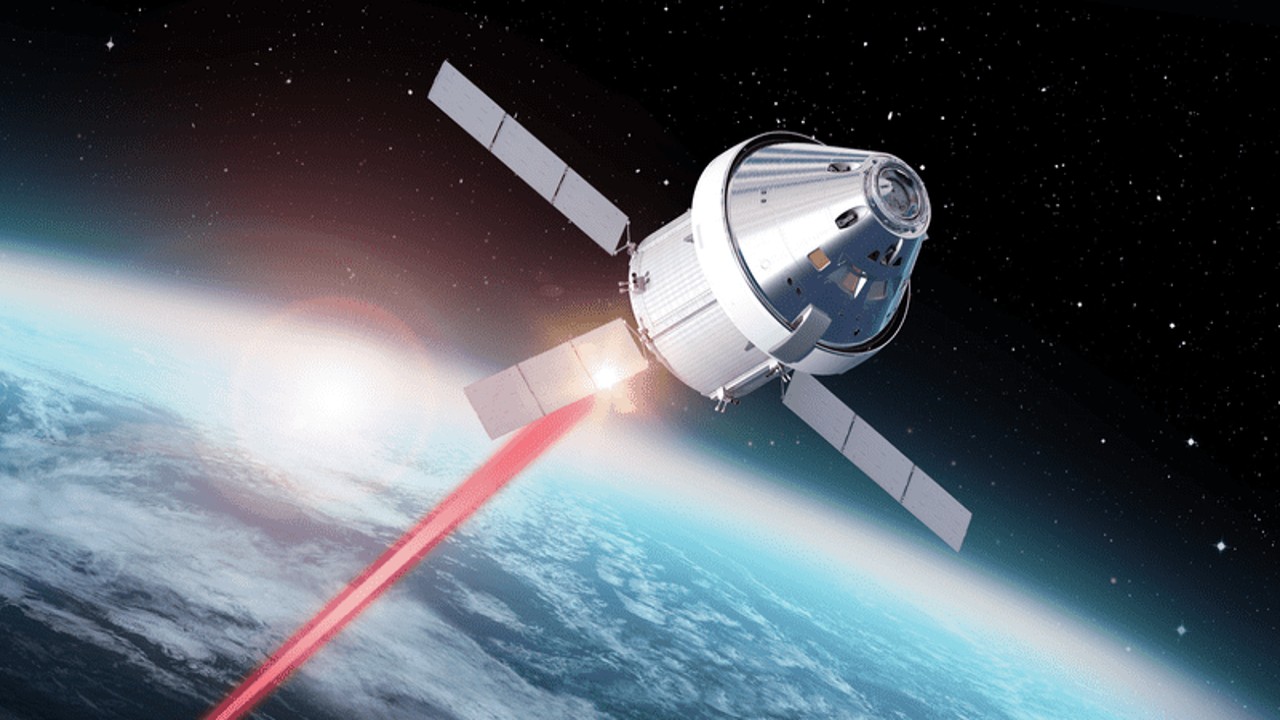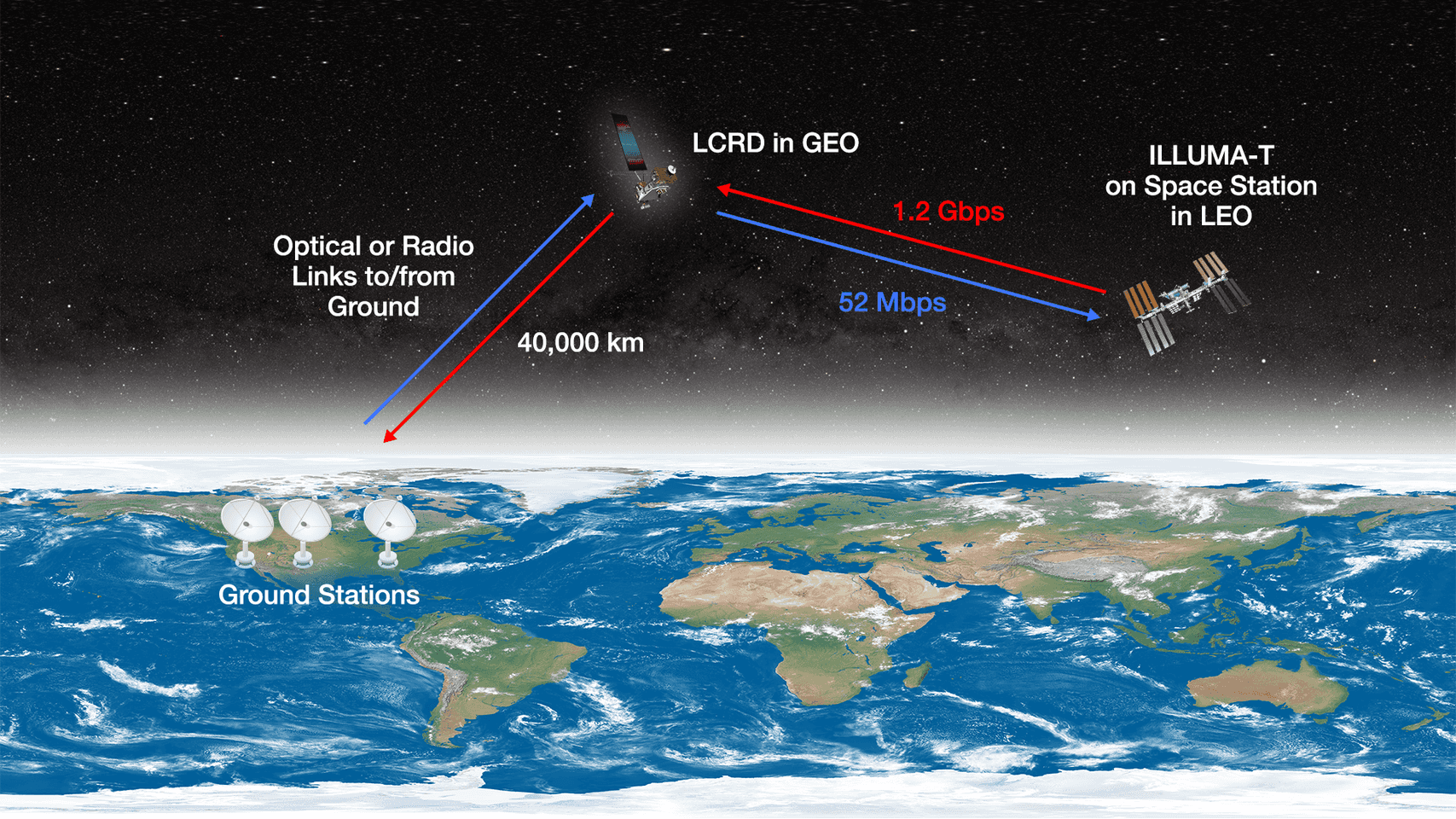Artemis 2 will use lasers to beam high-definition footage from the moon (video)
Artemis 2 astronauts will be testing out laser communications around the moon to enable faster transmission of images and video.
NASA is using lasers to evolve how the agency communicates between spacecraft.
In the past, the space agency has relied on radio signals beamed through its Deep Space Network to transmit any sort of scientific data from deep space probes back to Earth. Lasers, however, have the ability to vastly increase the amount of data spacecraft are able to send, and NASA is ready to send the technology around the moon.
NASA is including laser communications in the form of the Orion Artemis 2 Optical Communications System (O2O) terminal on Artemis 2, the next crewed mission around the moon. "Onboard the Orion capsule, the O2O system will send back high-resolution images and video from the lunar region," a NASA video published in April states. If all goes according to plan, the system should enable viewers on Earth to see the moon in real-time like never before.
Related: NASA's Artemis 2 mission: Everything you need to know

Imagine having dial-up internet for years, then upgrading to gigabit fiber optic speeds. That's essentially what NASA is hoping to accomplish for its future spacecraft.
To lay the groundwork for future laser communications, NASA has launched several demonstration satellites in recent years. The Laser Communication Relay Demonstration (LCRD) launched in December 2021 was the agency's first laser relay. That was followed by the TeraByte InfraRed Delivery (TBIRD) CubeSat launched last year, which reached data transmission rates of 200 gigabits per second.
Now, NASA is preparing the Integrated LCRD Low-Earth-Orbit (LEO) User Modem and Amplifier Terminal (ILLUMA-T), which is expected to launch to the International Space Station (ISS) later this year. ILLUMA-T will attach to the exposed facility on the Japanese Experiment Module.
Get the Space.com Newsletter
Breaking space news, the latest updates on rocket launches, skywatching events and more!
Once operational, ILLUMA-T will relay data back to Earth through LCRD in NASA's first end-to-end laser relay communications system, laying the groundwork for the O2O system that will be aboard Orion during Artemis 2.

Still, as NASA notes in its recent video, these experiments are "only the start of how laser communications are paving the way for advancing our scientific discoveries."
The success of Artemis 1 last year has put Artemis 2 on an imminent path to launch, which will fly the first astronauts to the moon since 1972. Images from the cameras mounted to Orion captivated the world during the spacecraft's first mission to lunar orbit and back.
With a crew onboard for Artemis 2, NASA expects to transmit not just high resolution images, but video as well. If all goes according to plan with these laser communications experiments, we can expect to see plenty of live or nearly live crew updates with the gorgeous background of the lunar surface visible in Orion's windows.
Join our Space Forums to keep talking space on the latest missions, night sky and more! And if you have a news tip, correction or comment, let us know at: community@space.com.

Josh Dinner is the Staff Writer for Spaceflight at Space.com. He is a writer and photographer with a passion for science and space exploration, and has been working the space beat since 2016. Josh has covered the evolution of NASA's commercial spaceflight partnerships and crewed missions from the Space Coast, as well as NASA science missions and more. He also enjoys building 1:144-scale model rockets and human-flown spacecraft. Find some of Josh's launch photography on Instagram and his website, and follow him on X, where he mostly posts in haiku.









